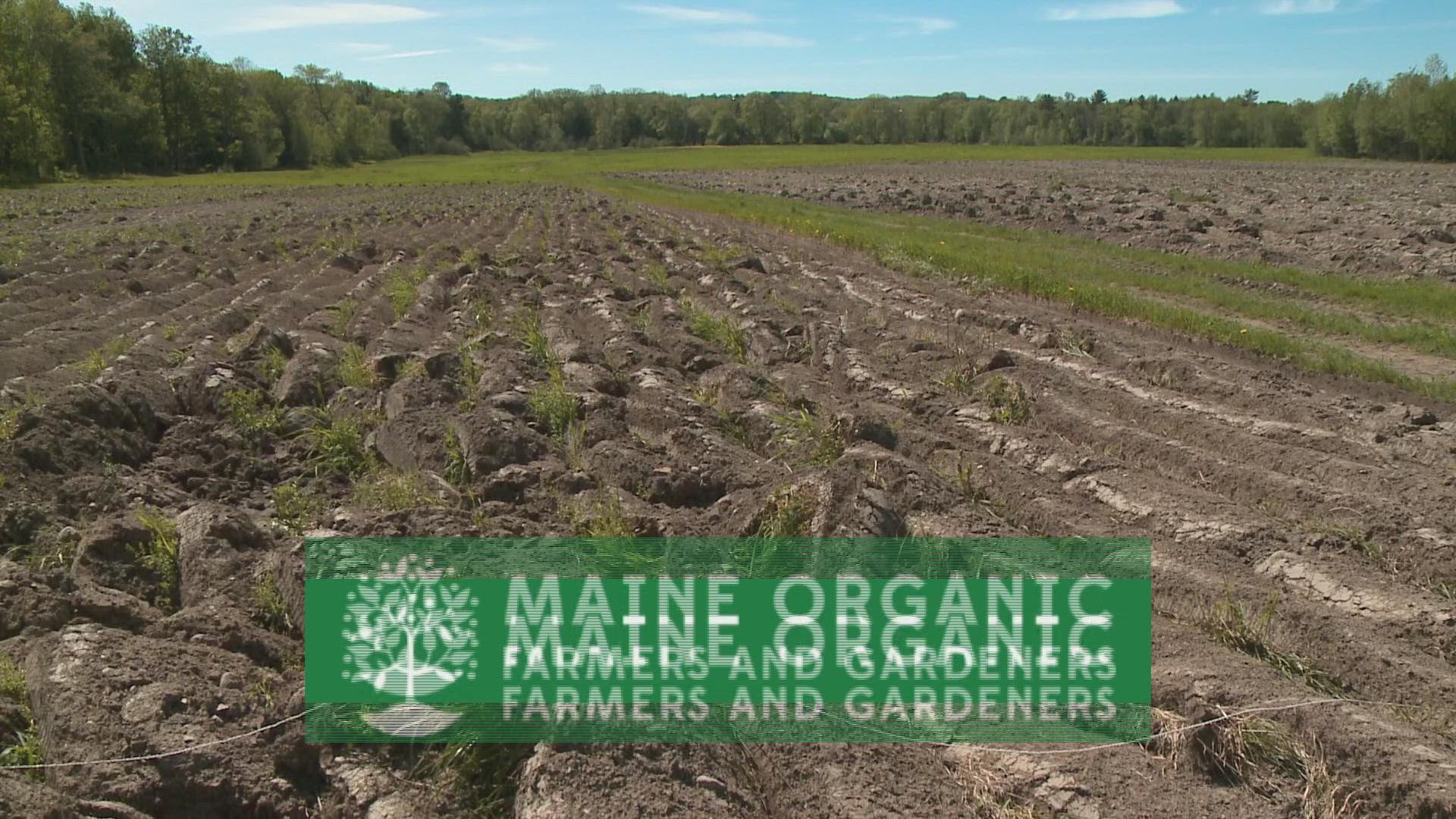MAINE, USA — An ongoing statewide investigation by the Department of Environmental Protection into PFAS contamination is expected to reveal more impacted farms. So far, 14 farms are dealing with the aftermath of tainted soil, livestock, crops, and water.
PFAS is a class of industrial chemicals that are used to make waterproof clothing, carpet, furniture, and food wrappers, as well as even firefighting foam.
The chemicals have been linked to serious health problems in federal studies.
The source of the contamination is believed to be leftover wastewater sludge that has been hauled to Maine farms and used as free fertilizer for decades.
But research is shedding new light on crops that could potentially be grown on these contaminated farms due to the way they absorb the PFAS chemicals from the soil.
The Maine Organic Farmers and Gardeners Association and the Maine Farmland Trust are helping lead research that could bring potential answers as to which crops can be safely grown on farmland tainted by PFAS chemicals.
"How much PFAS may be accumulating from the soil and water that plant is being grown in is in the crop we are going to eat?" Sarah Alexander, the executive director of MOFGA said.
Known as "forever chemicals," PFAS builds up in the soil, water, and the human body and takes years to break down. But some plants, including hemp, have been shown to suck the chemicals out of the soil, a process known as "phytoremediation."
MOFGA and MFT's ongoing research being conducted with the Department of Environmental Protection and the University of Maine's Cooperative Extension has found that process is happening in other crops, including corn.
"The corn does not take up the PFAS in the ear of the corn, it does take it up in the stalk," Alexander said.
Researchers are also analyzing other crops, including carrots and beets to see if the chemicals are only showing up in the leaves and not the roots.
Scientists are also trying to determine what levels present in hay could be safe for animals to eat. Katia and Brendan Holmes operate the 600-acre organic dairy farm Misty Brook Farm. They say the research could help guide what crops they may be able to grow in the future. 100 acres of their land was flagged for low levels of the chemicals after being spread with sludge years ago.
This past winter they had replaced an entire herd of Jersey cows after they consumed contaminated hay purchased from an organic farm. That farm was not aware of the contamination at the time.
The farm was forced to pull products and pay for their own testing. Department of Agriculture, Conservation, and Forestry (DACF) officials are testing their milk on a weekly basis, but the couple is still waiting for the testing of their pigs, who also ate the hay. They also don't know if meat and milk from their sheep are safe.
Meanwhile, they had to throw out six-thousand pounds of meat inventory.
"It was 56 thousand dollars of meat and just threw it into the landfill, we hope to be reimbursed for it," Brendan Holmes explained.
"The animals cost money to take care of every day, people also don't work for free," Katia Holmes added.
The family has been relying on a relief fund set up by MOFGA and MFT to keep their farm afloat. A 60 million dollar safety net approved by lawmakers is helping fund an income replacement for farms hit hard by PFAS.
In a statement, DACF Commissioner Amanda Beal and Bureau of Agriculture, Food and Rural Resources Director Nancy McBrady tell NEW CENTER Maine that officials are currently working on Misty Brook Farm's application for income assistance. Officials are also developing a testing regimen for some of the farm's pork livestock.
In the joint statement, Beal and McBrady said the following:
"There is nothing worse than the Department having to inform a farm that it has PFAS contamination. We understand the immense stress and worry that farmers feel as a result. The Department is committed to doing all that we can to help, and we are dedicating intense resources to the farms we work with, including Misty Brook.
"We are simultaneously working to fill positions created in the recently passed supplemental budget to enhance our internal capacity to meet the needs of farmers. We have tested and continue to test a broad array of items at Misty Brook, ranging from soil and feed to milk and frozen meat. The Department is working with the farm to determine a testing regimen for some of their pork livestock.
"This is emerging science, and unfortunately, we don’t yet have all the answers at the state or the federal level. Compounding the situation is the lack of available labs in the state, and only a few accredited out-of-state labs, which causes delays in analyzing the data. Presently, we do not have a pork action threshold. Maine CDC is working on action thresholds for some products, including pork, but they are not yet final.
"We will continue to work with Misty Brook to determine the appropriate course of action for determining when and how to test their livestock. Maine's income replacement program recently debuted, and we are working on Mistry Brook Farm's application. Because this is a brand new program, we are proceeding with care to ensure that the process works. It is our intention that the Income Replacement Program provides critical financial assistance to Misty Brook and other impacted farms as quickly as possible."
But frustration is mounting for the couple who say they are stuck in a toxic nightmare with limited options.
"At the end of the day we are the ones that have to make a living farming this land," Brendan Holmes said.

